-
Posts
19,725 -
Joined
-
Days Won
1,568
Content Type
Forums
Detector Prospector Home
Detector Database
Downloads
Posts posted by Steve Herschbach
-
-
I have extreme respect for teachers (my wife is one) so that is a high compliment indeed. Thank you sir!
-
 1
1
-
-
The Prospecting Scan (Alluvial Scan) is, as far as I can tell, a continuous graphic display of the ground phase which is the same thing as a ground balance setting. It is showing you the TYPE or ground mineralization, not the AMOUNT of ground mineral. See here for reference. Low numbers are salt ground and higher numbers ferrous ground. In theory tracking to more mineralized ground looking for black sand concentrations, on the theory those concentrations will have gold associated. The reality is this function in a normal metal detector is so depth limited that it is debatable whether eyeballs looking for color variations might be the better tool.
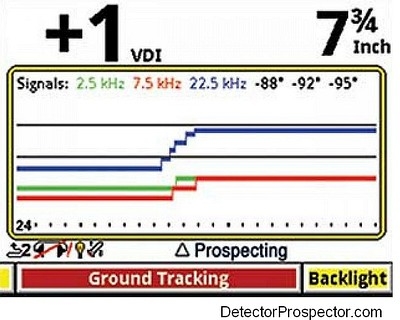
-
 1
1
-
-
We are all learning here! What makes true manual ground balance different is that the control simply spans the entire available ground balance range. This range does vary a lot in detectors. Anyway, you just put the control where you want, and most owner manuals tell you a good default setting. The only way to properly ground balance a manual unit is to manipulate the control in reference to audio feedback you get when bouncing the coil about 8-12" over the ground. Some places have no magnetic ground content (Florida white sand beach) against which to ground balance, so you dial in the default value instead.
At a certain level metal detector targets exist in reference to and in opposition to the ground balance setting. Performance degrades as the target VDI (phase) gets closer to the ground balance VDI (phase). In some circumstances you can purposefully move the ground balance setting away from the targets electronic reading and enhance the target signal by doing so. The White's TDI, even though it is a PI, is a machine that demonstrates well the effect of ground balance on desireable targets.
Another oddball use - splitting the difference between the ground balance setting for the ground itself, and a particular pesky hot rock. A person can usually operate with a bit of positive offset anyway. Moving the ground balance point closer to where a hot rock reads and away from the ground will increase ground noise but decrease the intensity of the hot rock "hit". Lower Gain, increased SAT, and splitting the GB setting can all help make hot rocks less obtrusive or even eliminate them entirely.
Long story short, there are reasons to manually mess with the ground balance.
-
 2
2
-
-
1 minute ago, auminesweeper said:
o would the SAT on the V3i fill in the gaps in the tracking speed like it does on other Whites models ?
I prefer to use the Default relic mode but if the ground phase numbers are above the mid 70's I hit the push pad once or on earlier models push the trigger forward because they have a faster SAT speed which does help with ground noise.
John
Welcome to the V3i rabbit hole! Yeah, track speed, SAT, recovery speed, filters - all matter and interact.
-
 5
5
-
-
The last few posts I made give some examples of why a manual offset either positive or negative is sometimes desirable as opposed to a "perfect" ground balance. Tracking or even ground grab gives you what the engineers think is the best ground balance. However, when prospecting I usually run slightly positive. If I ground grab a Gold Bug Pro, I get a neutral ground balance. But the first thing I do is hit the manual + button twice, which makes the detector give a slight response as the coil approaches the ground, my desired setting. It may be the V3i in Locktrac but punched up 1 or 2 points via the offset will produce better results on the tiniest gold targets.
-
 3
3
-
-
On 7/12/2017 at 3:47 PM, auminesweeper said:
Or even make that (V3i) tracking system with a variable speed so it could run slower than the MXT and faster so one could utilize the 22khz mode for prospecting
V3i does have a track speed setting. Owners Manual page 34:
"Speed – Selects the speed or aggression of Auto Tracking. Press ARROW Left & Right to select the speed of Auto Tracking. Excessive ground tracking can be as bad for performance as insufficient ground tracking. A speed that keeps up with progressive ground changes is desired. A setting that adjusts significantly when passing over slight (spotty) ground imperfections can cause instability and errors. Ideally select a speed that keeps up, yet doesn’t overcompensate for every unusual rock."
Part of the problem is this is a multi frequency detector and so ground tracking is probably a much more complicated thing than it is with a single frequency detector. Plus, the GMT and MXT have a specific prospecting intent, whereas with the V3i prospecting was probably last on the engineer "worry list".
Also from Link deleted since Findmall Forum update broke all old links
"Tracking Speed, lower numbers equals slower track speed. The V is always tracking as long as auto track is on. The control adjusts the limit of how much it can track at one time. So, (example - numbers are not correct at all - just to give you an idea what's going on), say you have a ground signal that is off by 10000 from where ground really is. If you have your setting at 10, the detector would track at the most by 20 at one sample. If your ground was off by only 8, then it would adjust by 8 as that's less than the limit. But at 10000, it will be limited to 10 at that one data sample. Whereas, a setting of 20 will track at most by 40 per data sample. There are a lot of factors that come into play on how tracking is adjusted - whether it has seen a target recently, how fast the ground is changing, the user adjustable track speed, how close the ground setting is to the current ground. If the ground setting is close to the current ground, it will track to the current ground faster than if the current reading is far away (might be a target and don't want to track to targets)."
-
 1
1
-
-
I see that White's describes the "ground grab" method in the V3i manual as being "Manual Ground Balance" so you have your proof there! I guess it is a manual method compared to tracking but it is still a ground grab methodology.
The GMT for a long time was my only and best example of a detector that does all three basic methods.
1. Tracking
2. Ground Grab (or Track & Lock)
3. Manual
and for sake of accuracy a fourth method exists....
4. Factory Pre-Set
Click images for larger versions....
-
 2
2
-
-
The V3i is a bit unique as it basically offers either automatic ground tracking and a "track & lock" or ground grab system. However, since White's removed the DFX manual ground balance (G.E.B.) settings from the V3i, they did see fit to add a "Lock Offset" function.
Some automatic tracking systems (like DFX and V3i) feature a "Track Offset" function that allows you to create a positive or negative bias to be applied to the tracking results. V3i added a "Lock Offset" which is basically a manual ground balance control. The difference is it gets the base setting via the ground grab, and then just adjusts up or down from there.
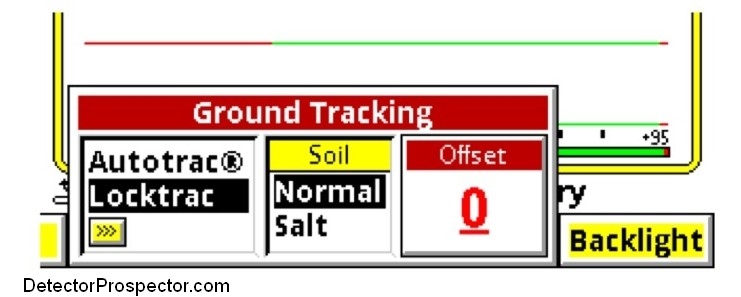
"Offset – Selects a slightly + or – ground balance and tracking setting point to enhance ground rejection
and target responses. Typically a “+” offset is used to reduce ground mineral responses and enhance target signal responses (particularly small size targets) in extreme ground types. More rarely “-“ offset may be used to enhance the response of iron oxides in a low iron ground matrix, for example stony iron meteorites in a ground matrix consisting of ice/snow."-
 3
3
-
-
10 minutes ago, auminesweeper said:
Does the V3i or the DFX have a Live ground phase window when the GB is locked ?
Basically, no. The DFX has a D.C. Phase function and the V3i the Ground Probe, but neither is as simple as say the Gold Bug Pro in all metal mode, where the big number on screen is a live ground phase number.
-
 1
1
-
-
Deft Tones, this is all no big deal, just me "self teaching" by looking up stuff for my own use and then posting about it. Manual ground balance is rarely needed by most people but is firmly entrenched in the prospecting world. In the end, all metal detector performance comes down to the efficiency and accuracy of the ground balance. A fine manual tune was once considered essential for gold prospecting but honestly that is not so true any longer as better tracking systems come online.
-
 3
3
-
-
The old MXT was of course just tracking or "track and lock". The addition of the ground grab button on later MXTs was a nice usability enhancement but really does the same thing in the end.
-
 1
1
-
-
That's correct John. I think we are thinking same thing and tripping over terminology. The F75, GBP, etc. track internally and display the current tracking as the ground phase number. This is only displayed however and is not engaged or used until locked in via the ground grab button.
-
 1
1
-
-
On 7/12/2017 at 4:15 PM, Deft Tones said:
I set mine to lock, pull the trigger and hold while pumping the coil until balanced before releasing the trigger. It remains locked at that GB point. Is that not a manual GB?
No, that is ground grab. Manual ground balance has the ability to adjust up or down via a control. There are three basic methods:
GMT - Ground tracking OR ground grab OR manual ground balance
MXT - Ground tracking OR ground grab
V3i - Ground tracking OR ground grab
With automatic tracking a detector adjusts to the ground on the fly.
Ground grab is accomplished via either the "track and lock method" or via a "Ground Grab" button. Tracking and then locking simply sets the balance at the last tracked setting. Ground grab usually relies on a detector tracking internally and then "grabbing" whatever that internally tracked number is and locking it into place via a button or switch. Machines like the F75 and Gold Bug Pro, to name a couple, do track internally at all times, which is where the ground phase display comes from. Hitting the ground grab button on either unit locks the current tracked number in as the current fixed ground balance setting. Other machines ground grab by temporarily engaging a tracking circuit when a button or switch is activated.
Manual ground balance is pure manual control. Classic example is the Gold Bug 2 ground balance (ground reject) knob.
-
 3
3
-
-
I have been bouncing back and forth between the White's DFX and V3i for many years. In theory the switch to V3i should be a no-brainer.
However, the original Vision model I got had bad EMI issues in Anchorage, Alaska, especially with buried power lines. When the V3i came out I tried again with no joy. When I moved to Reno I tried again, and EMI was less a problem. The next issue is the main reason I have a DFX is to run a BigFoot coil. Most coils need to be tuned for the specific detector operating frequency. The BigFoot is tuned for 3 kHz and 15 kHz especially for the MXT/DFX series. My BigFoot works well enough in V3i 2.5 kHz and 7.5 kHz single frequency modes. However, in 22.5 kHz single frequency mode or in three frequency mode the target id (VDI) numbers all skew very high (they tripled on the last V3i that I had). This more or less limited the BigFoot to being used only in 7.5 kHz mode on the V3i where I would generally prefer to use 22.5 kHz single frequency mode. The coil runs just fine on the DFX in 15 kHz mode so after lots of back and forth I finally settled on the DFX.
The DFX has weaknesses however. The DFX always transmits a combined dual frequency waveform. When single frequency mode is chosen, the machine still transmits the same waveform optimized for dual frequency use, but simply ignores half the return signal to process either the 3 kHz portion or the 15 kHz portion. The transmit waveform is not optimized for single frequency and so some punch is lost compared to a dedicated single frequency machine like the MXT.
The V3i in single frequency mode actually modifies the transmit waveform for use at the single frequency. It is still not quite as efficient as a dedicated single frequency detector, but a big improvement over the DFX way of doing things. The V3i also adds transmit boost capability, that can bring that last little bit of lost performance as compared to a dedicated single frequency detector. The lost efficiency shows up more as shorter battery life than actual lost performance.
Second, the DFX while in multi frequency mode is always locked into "Salt Mode" for saltwater beach operation, effectively tuning out the salt range. This unfortunately means that small gold capability is degraded in DFX dual frequency mode. The V3i allows the salt mode operation to be deactivated while in multi frequency mode, allowing for better small gold performance while in MF mode. The closest the DFX can get is to run in a single frequency mode, which turns off the dual frequency salt compensation. But now you are back to running a less optimized single frequency mode as compared to the V3i in single frequency mode.
Long story short there are too many benefits and neat features on the V3i that I have been denying myself due to my desire for BigFoot compatibility. The fact is I normally run the BigFoot in 15 kHz single frequency mode on my DFX for a little extra gold hots. However, after some thought I have decided the V3i running at an optimized 7.5 kHz is likely just as good if not better than the DFX running a "soft" 15 kHz. So I did talk myself into a new V3i recently.
In theory the V3i at 22.5 kHz should be a decent nugget detector, but you rarely hear of it being used as such. Part of that is a ground balance issue. The DFX and V3i tracking systems really are not up to working that well in heavily mineralized ground. The DFX does offer a normal manual ground balance mode with both a coarse and fine adjust, although you have to dive into the menu to access it - not so handy for making constant tweaks. The V3i actually has no true Manual ground balance mode. The best you can do is track and lock, as on the MXT. However, the V3i "Live Controls" can be set up to give the operator direct access to a ground balance offset that can tweak the "locked" setting up or down. That may actually be easier to access and use than the DFX version of manual ground balance but I need to play around more to find out for sure.
-
 6
6
-
-
I expect I will have one of these coils next week so we will see. I can't imagine XP releasing a complete loser of a coil.
Now the guy reporting the poor depth says "never mind"! http://www.treasurenet.com/forums/deus/546676-first-thoughts-review-new-xp-deus-elliptical-coil-5.html#post5464355
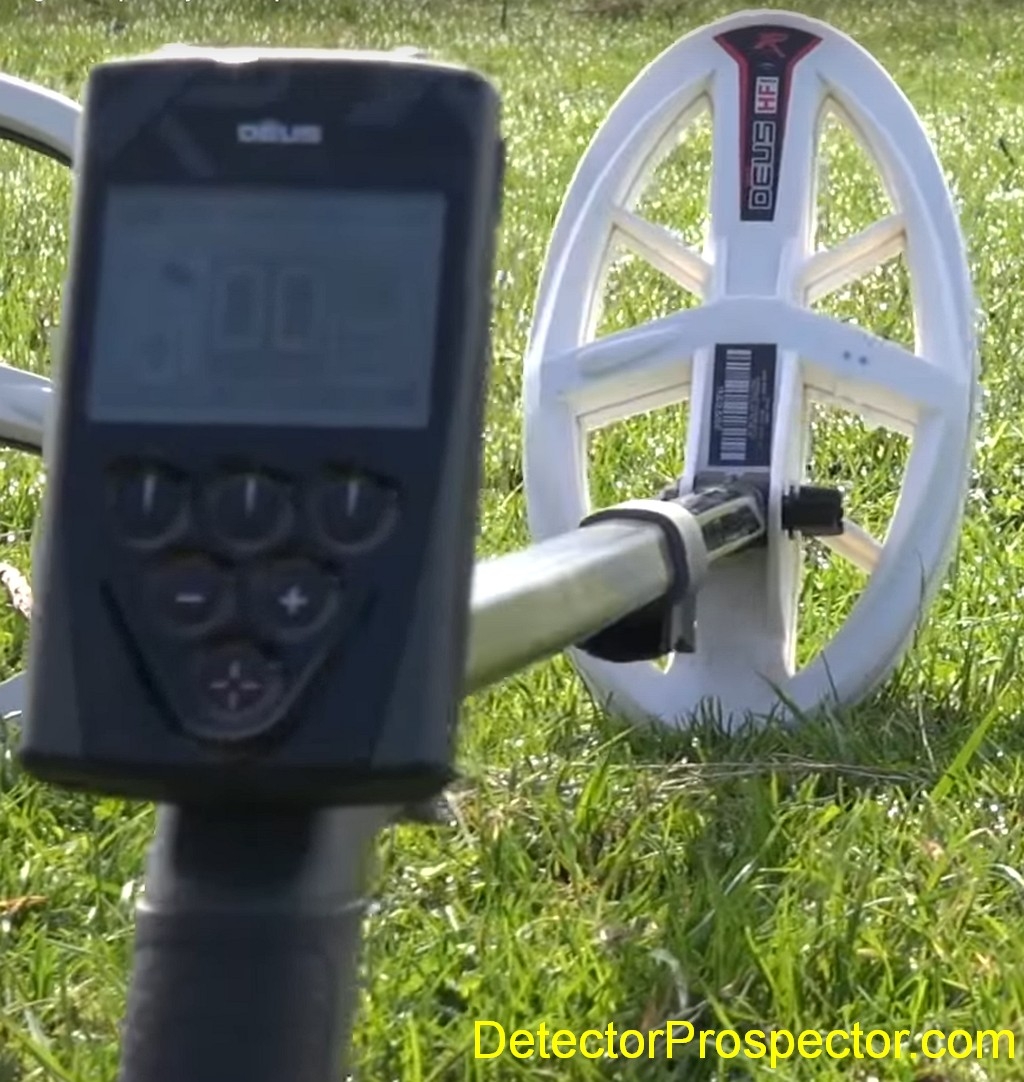
-
 1
1
-
-
4 hours ago, ophirboy said:
As i use auto or auto+ does that mean the detector is left at this setting or switched to a manual setting whilst sitting the detector down before digging and pinpointing.
I run in auto a lot and when doing so I just leave it there with no ill effects, but switching to Manual 10 might give you a sharper signal for pinpointing small nuggets.
-
 2
2
-
-
Part of my desire for this coil is that it perhaps does not beat a Gold Bug 2 but is close enough to do the trick, given it can be used to coin, jewelry, and relic hunt. But if it does well on gold but not well enough on coins etc. then you are back to needing at least two detectors (or at least two Deus coils) to get a good balance in performance. The 9" round HF coil may be the better compromise, with the elliptical tilted too heavily to the gold nugget side of the equation.
-
Oh, I would not say 5" air test on a penny sounds good! I just was pointing out that out of all the coils made for the DEUS so far I would expect this one to get the least absolute depth on high conductive coins no matter the frequency. How much less remains to be seen.
I think people do have reason to be concerned and perhaps hold back. This coil was delayed a couple extra months and never a word of explanation. Some kind of issue to be overcome? I don't know, but the old wisdom about not being the first kid on your block to get new detecting toys still holds true. This is not just a coil but is actually a $425 metal detector and so a lot more is going on here than just wire in a housing.
The DEUS HF elliptical was designed for and is marketed as a gold prospecting coil, so how it fares in highly mineralized ground on small gold nuggets versus my GM1000, Gold Racer and Gold Bug 2 are questions at the top of my list. The 3.5" air test on a half gram nugget does not sound good either, but as always it's real world results that matter.
-
 1
1
-
-
Well, check those switches on the Black Widows first! However, this is a known issue with other Minelab detectors. Headphones do need to be wired properly in order to work with some models. This Minelab Knowledge Base article goes over the issue as relates to the CTX 3030. I believe the GPZ 7000 is identical in this regard. Sun Ray makes two models of Sun Ray Pro Gold headphones, the original model, and another model wired specifically to work correctly with the CTX 3030 (and other detectors also) for $5.00 more. Why not just make the one model that works with all detectors? Good question. Long story short I own two sets of the Sun Ray CTX version and they work with anything.
I would tend to doubt this is the problem on the GM 1000 but figured I would mention this just in case.
Click on images below for larger versions....
-
 1
1
-
-
I doubt this coil would get "more depth" in absolute terms on high conductive coins. Any of the existing coils should be better choices for pulling copper and silver coins at depth. However, this coil may pull coins at two or three inches in dense trash that are missed by the other coils simply by virtue of the narrow footprint. This is a sniper coil, not a deep seeker.
Same guy is quoting a 3.5" air test on half gram gold nugget running at 80 kHz.
-
5 hours ago, GB_Amateur said:
Steve, why are you burdened with that ship's anchor ATX when you have the version you modified with weight almost cut in half? (And thanks for your always informative+educational writings.)
I am testing the new coils, which will only mount on my stock ATX. In this case it works out better anyway as the weight actually is a benefit when trying to swing in the grass and weeds. Besides, the "boat anchor" still weighs less than my GPZ so I guess it's all relative.
-
 1
1
-
-
I think the swing faster thing may be misunderstood. In moaning groaning areas the only real solution previously was to slow way down. Now, you should not have to slow down as much. That's all.
-
 3
3
-
-
I have been out and about recently with the new 11” x 13” DD coil Garrett has introduced for the ATX. I have both the DD and mono versions of the new coil but so far most of my time in field has been with the DD coil although I have also used the mono. The new coils are aimed at a few issues that owners of previous ATX coils have complained about. First, the rather unique rear hinge design of the previous ATX coils that allows the detector to fold up into a particularly compact configuration. This design has two issues. As the coils age the weight tends to cause the coil to slowly sag forward. Not a huge factor but it can result in constant small adjustments to level the coil out. More important it throws the weight of the coil forward, hurting the center of balance. Again, not a huge issue, but one that becomes more apparent if you try and mow through high grass and weeds with the ATX. Finally, the original ATX coils had a tendency to catch an edge on a rock or other hard object and generate false signals when pushed to the highest sensitivity levels.
Garrett came up with an ingenious fix for these issue, that both allows the coil to fold up as desired while delivering that center mount coil so many have craved. The new coil design in a fully enclosed design that has a sliding channel that lets you move the coil attachment point from rear to center or anywhere in between. You don't see something new in metal detecting very often but this really is. And it works. Here is a shot of the new coil with the old design inset into the upper right. The new design is completely enclosed. This is a benefit especially while nugget detecting as putting a full scuff cover on the old design creates a catch area for weeds, twigs, and other debris. The new design sheds debris and so is better for dry land use, but the old designs will remain the coils of choice for in water use.
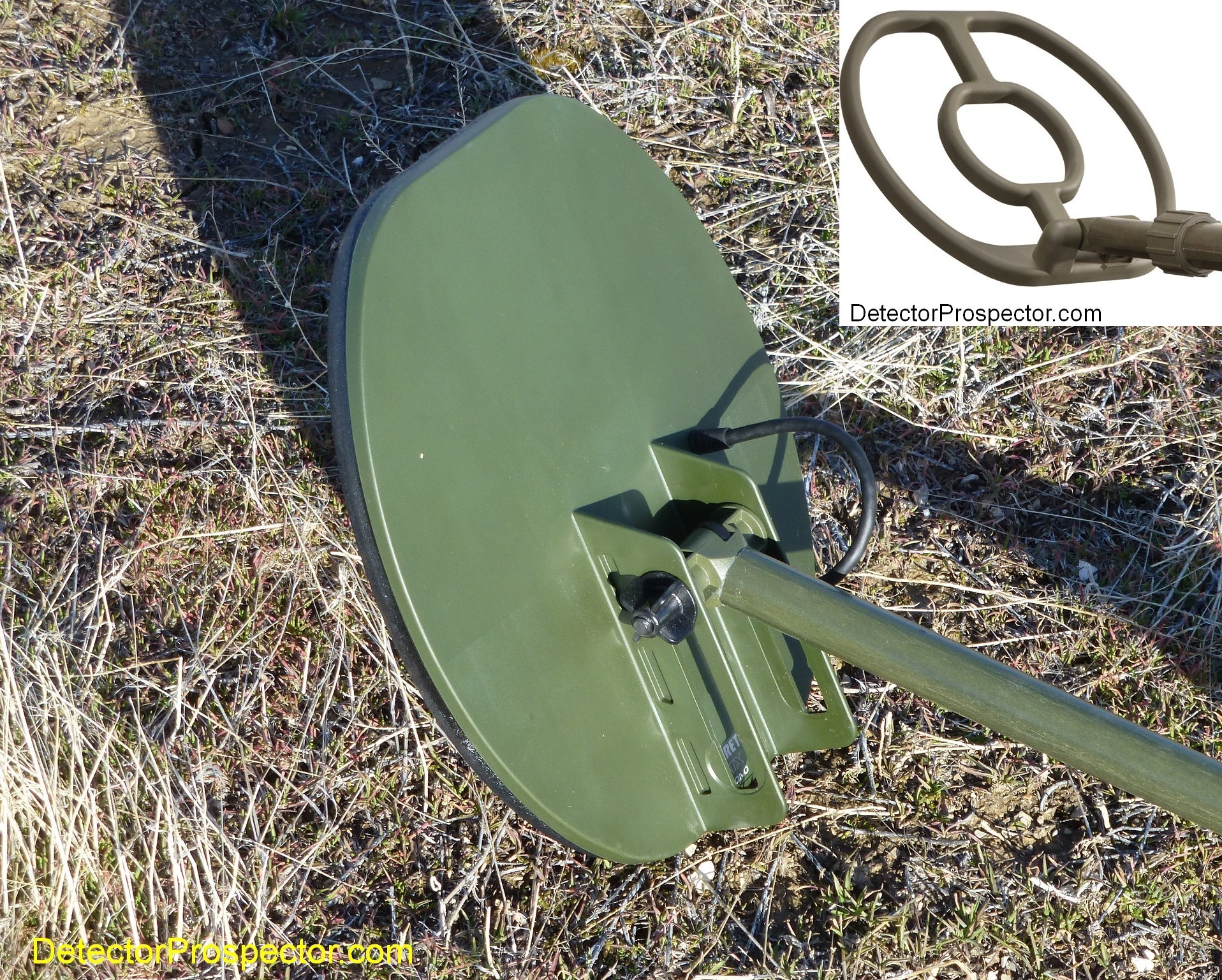
I was initially more excited about the mono version of the coil because of my experience with other PI detectors which often favor mono coils for overall performance. The ATX however was designed specifically around a unique Garrett DD design that modifies the overlap area of the double D design to create what is in effect a small inner coil region that is exceptionally hot on small gold. This roughly 4.5” x 5” inner coil area is nestled directly in the middle of the overall 11” x 13” area. This inner area is not visible due to the enclosed housing design but it is there and a user wants to be very aware of this fact when hunting for the smallest gold. The mono version of the coil lacks this hot inner coil area and so lacks the extra sensitivity to small gold created by the dense electromagnetic field generated there. The mono coil is actually hotter around the perimeter of the coil where the windings run but overall it is a bit less sensitive to the smallest gold than the DD coil although in theory the mono should have an edge for depth on multi-ounce nuggets. The mono coil also lacks the DD ability to engage and use the rather decent ATX shallow ferrous rejection circuit, which only works with DD coils. For these reasons I think most people will be better served by the DD version of the new 11” x 13” coil, with the mono being a better choice perhaps for those seeking some small advantage on the largest gold nuggets at depth.
I own the Garrett ATX mostly because of its versatility. It is my favorite beach and in water detector due to the robust physical design combined with an ability to handle the worst combinations of salt water plus magnetic black sands and cobbles. This works very well at most western U.S. ocean and lake beach locations and at volcanic island locations like Hawaii. I actually do a bit of coin detecting with the ATX also. The ATX is also a very capable prospecting detector that complements the other detectors I have very well. The ATX can ground balance to just about anything, making it very useful in desert salt flat areas and for handling certain hot rocks that other detectors struggle with. The ferrous discrimination, while not perfect, is one of the best available in a PI detector, with the main failing being that it only works on shallow targets. It does not help for those really deep nails but is a definite aid in an area littered with surface trash. I also discovered another advantage with the ATX on a recent trip.
I had been doing some prospecting for most of a week in an area that seemed like it might have good potential but with little to show for the time spent. I finally decided to fall back to an old known patch to get a little gold at least before I headed home. This year I have run into a new issue in northern Nevada. Several years of drought left areas relatively bare of grass and weeds, but extreme wet conditions this last winter really produced a bumper crop of grass in some areas. Another detector I often employ has a little larger coil than the Garrett 11” x 13” coil, and so I found it advantageous to switch to the ATX with the new coil specifically for hunting these grassy locations. It is still tough going with the ATX in this kind of stuff but it did help make it more manageable. The new center mounted coil works far better in the grass than the old rear mount design, and the enclosed housing sheds the debris that would quickly pile up on the old coil with a full scuff cover. Best of all, running the ATX full out at sensitivity 13 resulted in almost no false signals from knocking or hitting the coil on rocks or other obstructions. The new coils are at least as good if not better than other competing brands now in this regard. Instead of the careful coil control required of the old coil I could manhandle the new coil as I pleased and basically just did not have to think about the issue at all. I think the new enclosed housing combined with the new scuff covers has a lot to do with this by providing a cushioning effect of sorts.
The old stock coil sensitivity to knocks at high sensitivity I think was overdone by many, as it can be dealt with by careful coil control. However, being freed of the need for careful coil control absolutely makes for a more positive prospecting experience as it frees the operator from paying as much attention to the detector. Instead, more attention gets spent just hunting naturally with the detector while paying more attention to surroundings and visible signs of gold mineralization. In my opinion for my use it actually results in a tipping point being reached. Before, I was less prone to using the ATX for prospecting because of this issue. Now, I am far more likely to employ the ATX than I was in the past with the knock sensitivity issue all but eliminated.
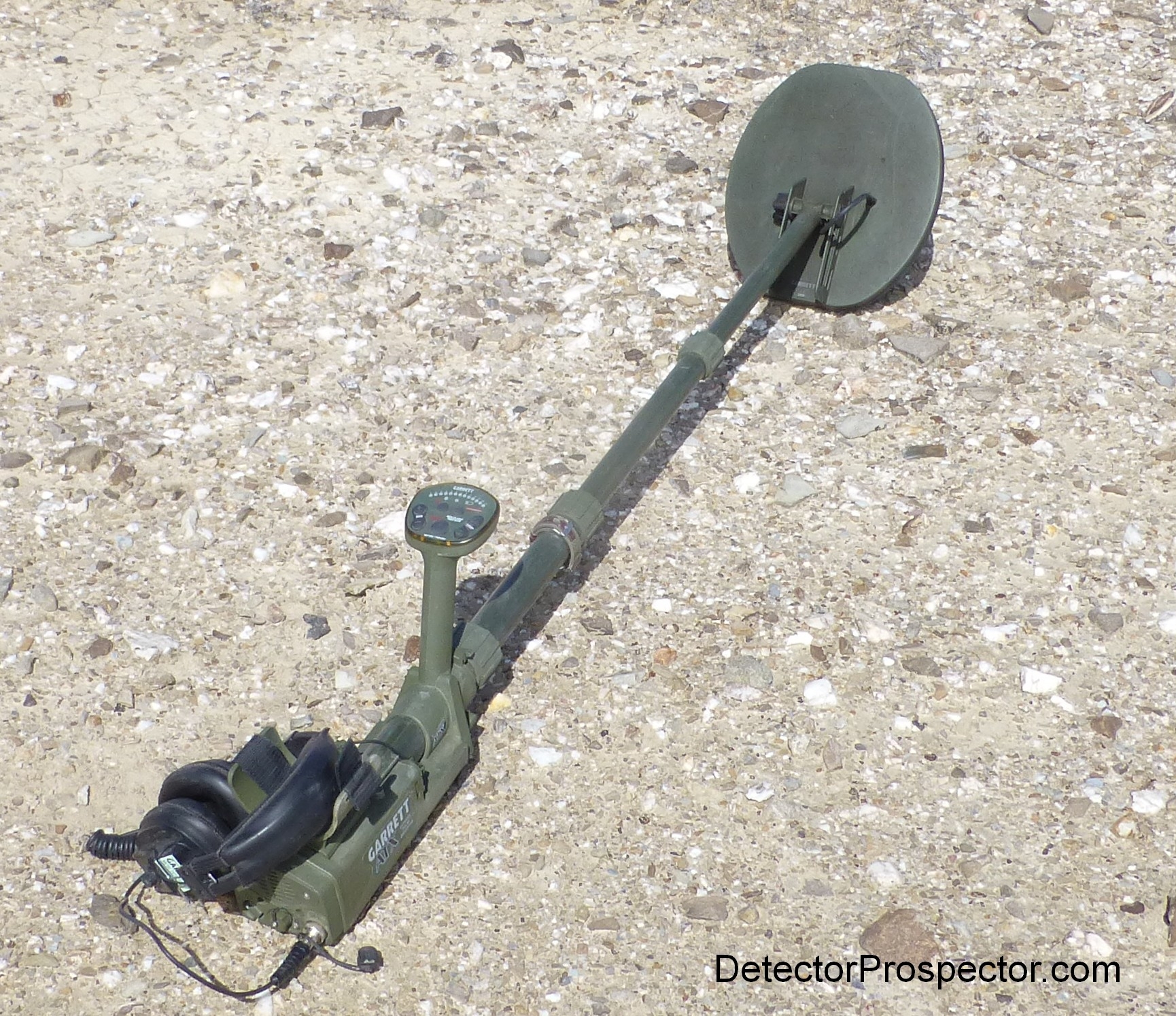
The patch I hunted has been pretty well pounded, but I targeted a trashy location that had seen less detecting than the trash free areas, and was pleased to have not one but two nuggets turn up, one weighing 1.5 grams and the other 2.19 grams. Not small nuggets at all really – anything over a gram is a pretty decent nugget in my book.
I am far from done using or reporting on these new coils and as I get more time on them in the field I will report back. Right now I am very pleased with the new DD coil in particular, and would not hesitate to recommend that anyone buying a new ATX for gold prospecting get the 11” x 13” DD as the stock coil via one of the new packages Garrett is offering. For existing owners it is a bit more complicated. I have to say that for overall depth and sensitivity I perceive there to be no real difference between the 10” x 12” DD and the 11” x 13” DD. Since a DD coil has a transmit coil and a receive coil, each just over half the size of the overall coil ,you get very little actual increase in the receiver coil size when you increase the overall coil size by only an inch. Once the new housing is taken into effect there is very little difference if any in the size of the actual coil windings involved. Long story short from a depth and sensitivity perspective I have experienced no real difference between the 10” x 12” DD and 11” x 13” DD coils. What difference there is there is so small I can’t personally recommend a person get one of these coils based strictly on that factor. For me the real benefit is the debris shedding enclosed coil housing, superior coil center mount handling, and extra resistance to false signals from coil impacts. The advantages in those regards are real and substantial and worth the upgrade for those who are troubled by these issues. The old 11” x 12” DD will probably never be used on my detector again for gold prospecting, but will be reserved for water use only.
-
 5
5
-
-
When I am water hunting wallet stays home. Drivers license in glove box. Key goes with me in the water. The only issue I have had is on vacation using a rental car. The have keys sometimes that have an integrated module with battery that opens and locks doors, etc. If you take those in salt water it will kill the electronics. Which I did because trying to hide keys on a vehicle in a busy tourist location - yeah, I worry somebody will see where I place them.
-
 3
3
-


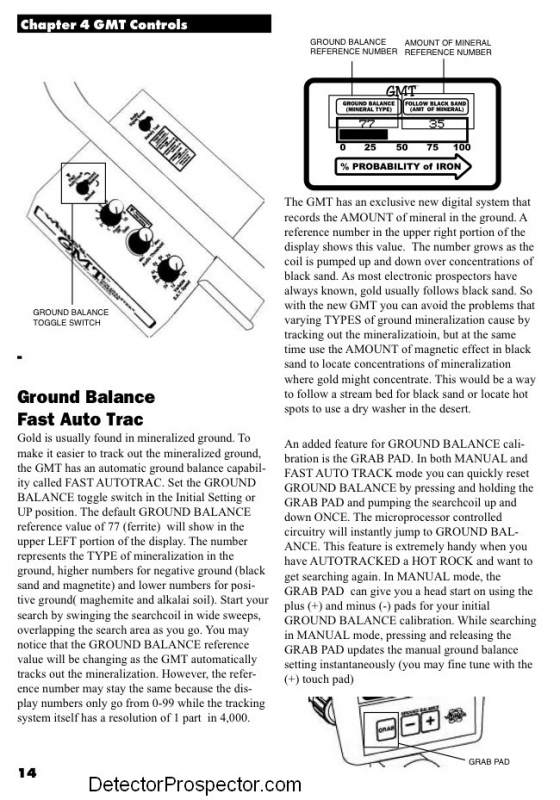
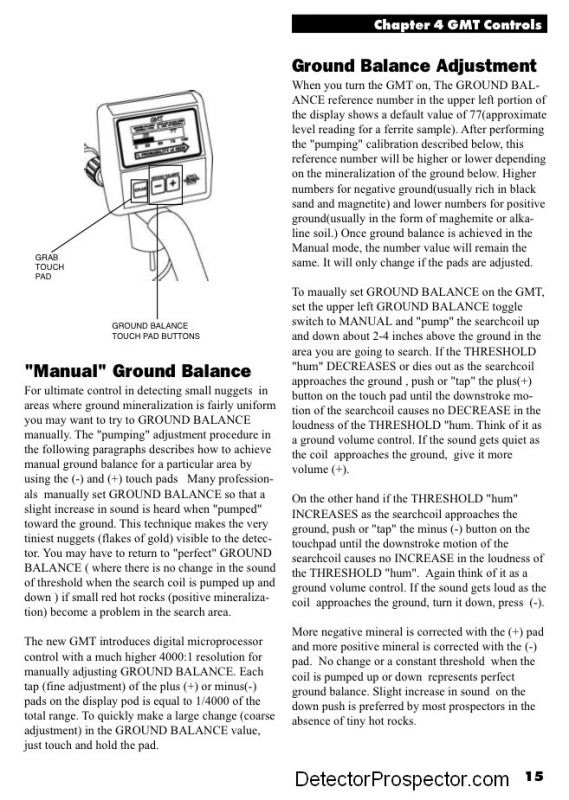
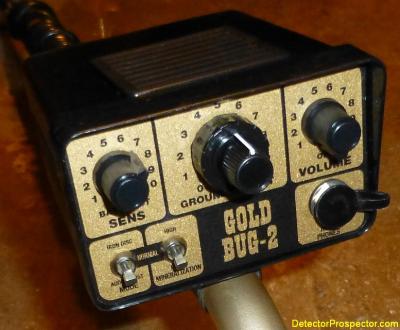
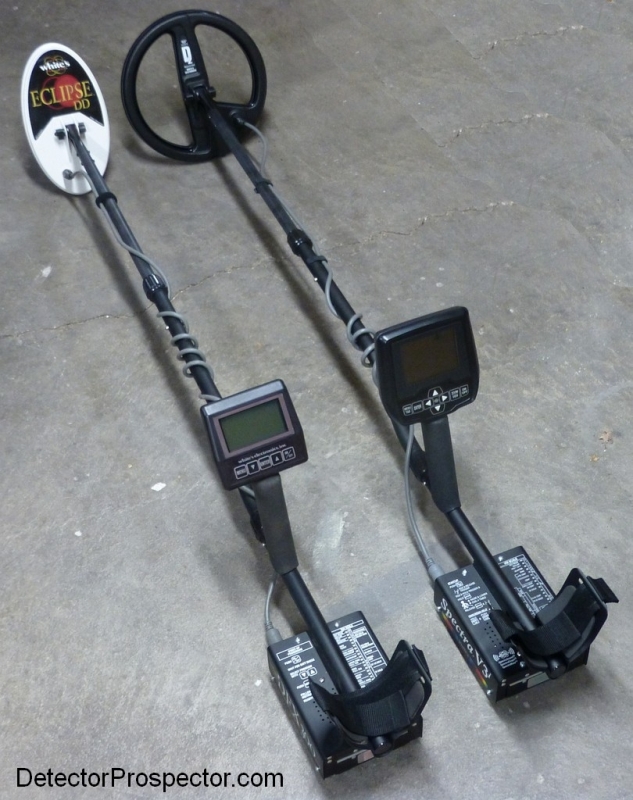
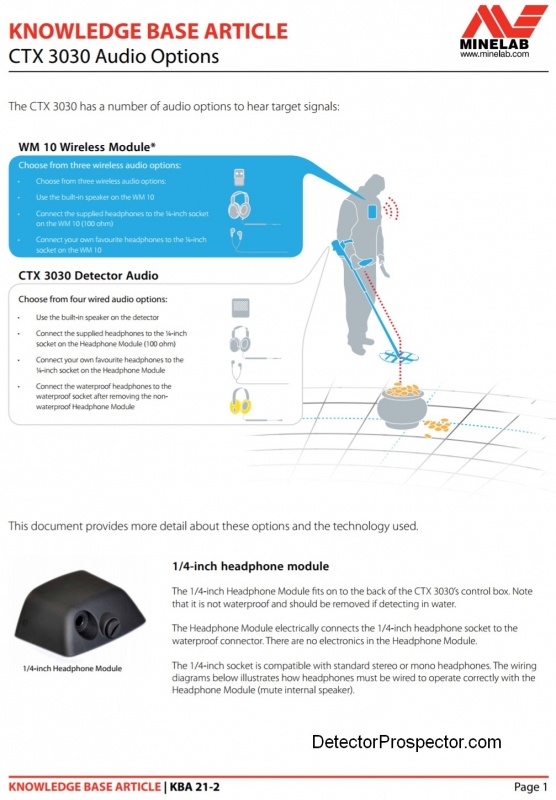
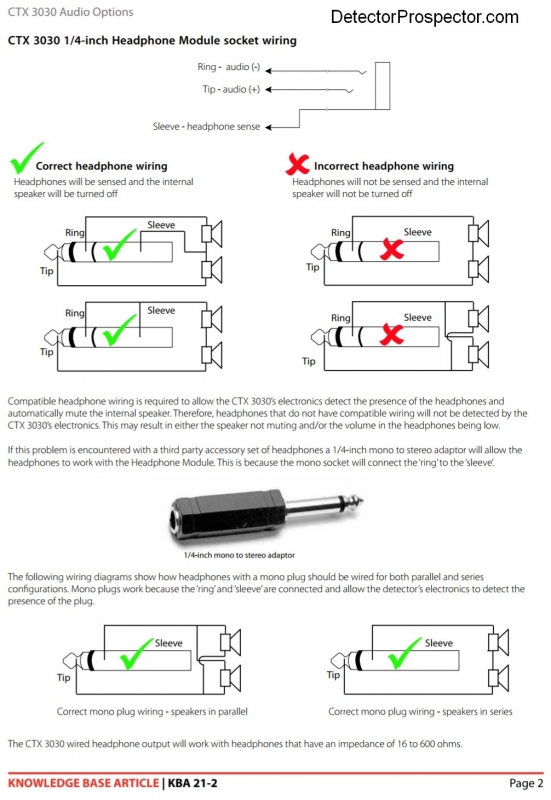
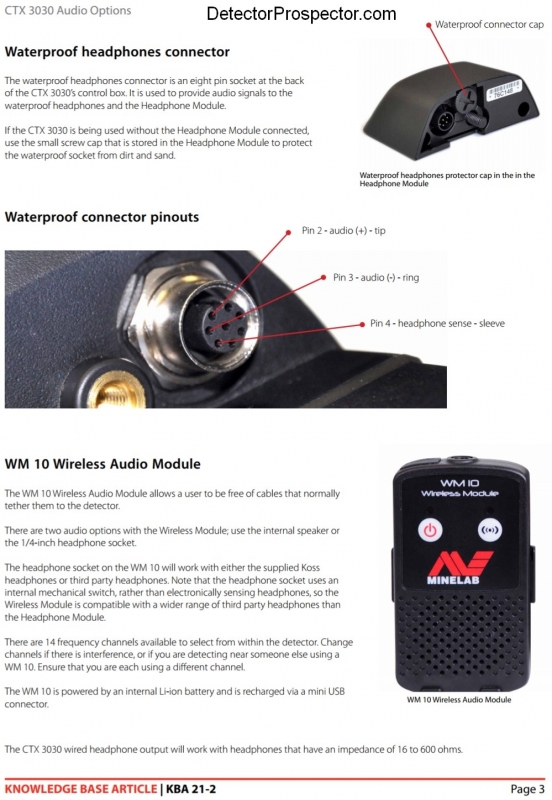
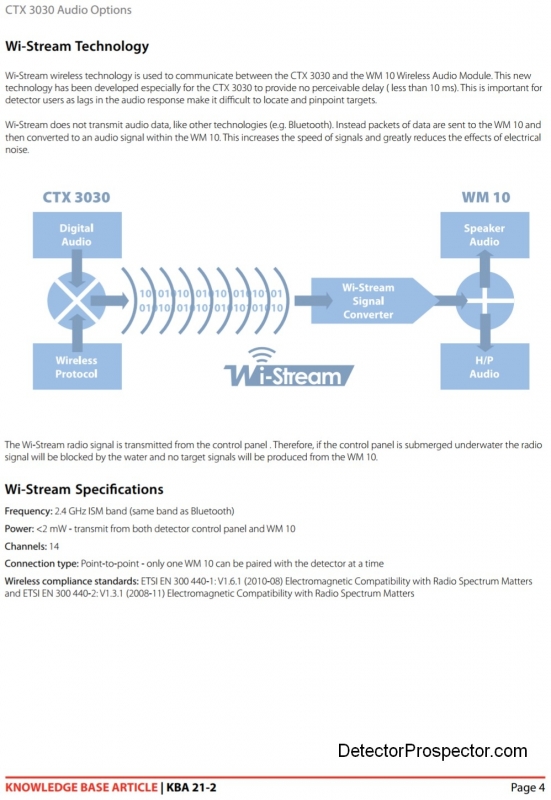
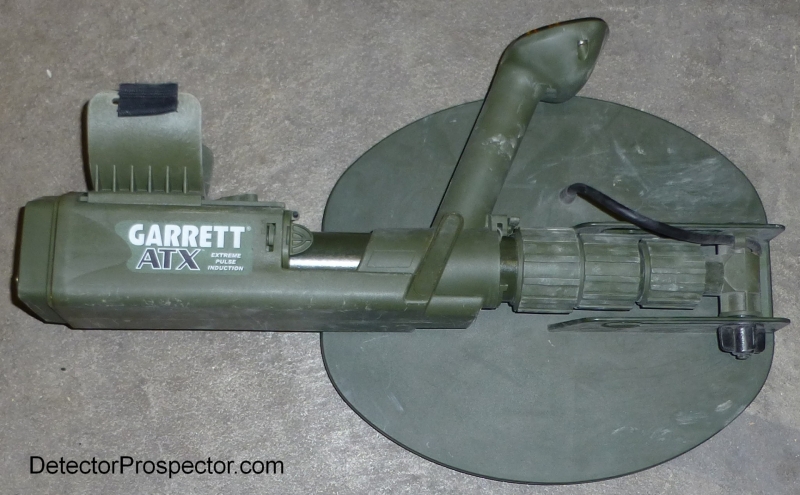
ATX Ground Balance
in Garrett Metal Detectors
Posted
Welcome to the forum!
First off, your mention of "drift" does not seem right - you may have a defective detector. Drift in my book means you tune up the detector, and if you leave it sitting on the ground and walk away, the tuning slowly changes all by itself. This is usually seen by the threshold getting slowly louder until it becomes very loud. Or, the threshold fades away until it disappears. Any modern detector operating properly should hold a steady threshold after tuning.
Now, if you are tuning up your machine in one spot, then when you move it it starts to make sounds, then the detector may simply not be tuned properly. For starters, your sensitivity level may be too high for salt water operation. Florida generally has a higher salinity level than some other places and so the salt water itself is a problem, though the ATX should still ground balance it out. If you read the link posted above however you will see it takes me a combination of lower sensitivity, increased disc, and ground balancing to tame the salt water and volcanic rocks in Hawaii. The first goal is to get stable operation.
I have a very hard time explaining to people that PI detectors in particular and ground balancing in general do not "add depth" or "go deeper".
Due to the point of diminishing returns the fact is most good high power metal detectors with an identical coil will find a metal object in an air test at roughly the same distance. This is the theoretical 100% max depth as revealed in air tests. It is the theoretical maximum distance into the ground that you might find the same item in the ground.
The problem is metal detectors also pick up both magnetic type soils and salt water. If the detector is seeing these things it blinds them to the metal object you wish to find. The classic example is car headlights in the dark. When the air is clear you can use high beams and see a great distance. However, if the air is full of heavy rain or snow, the headlights reflect off these undesired targets and blind the driver. The solution? Low beams. Less power focused more directly in front of the car removes the excess feedback from the rain/snow allowing you to see that deer standing in the road.
Ground balancing is a filter and not all that different that the way the discrimination system works. The ground signal or salt signal (or both) are identified and then tuned out. The ground effect is still there, but the detector subtracts it from the overall signal. The key word there is "subtracts". Ground balance methods work by subtracting part of the signal, and all subtractive methods create depth losses of some sort the closer any detected item gets to the "hole" created by subtracting the ground or salt signal. Signals are not perfect but spread over a small range, and so eliminating any signal usually means taking out a small range of signals.
If you have a trash target like a bottle cap and a high resolution detector that bottle cap will produce a VDI (Visual Display Indicator) number or target id number. If you try to disc just that one number, you will still usually get a broken signal, because the bottle cap actually produces a small range of numbers that dance around as you sweep the coil over it repeatedly. To reject the bottle cap completely means possibly having to eliminate a range of several VDI numbers. The catch? Any good items with similar numbers will also be rejected along with the bottle cap. Items that read just one or two VDI numbers in either direction may also see degraded results.
Ground balance works the same way. A window of response is rejected. Desired tems that fall into or near that same signal response area see reduced depths or are eliminated. Luckily most desired items do not fall into the same region as most ground signals. Eliminating slat signals has more direct impact because small gold signals and salt signals are identical.
The ground balance is a filter that is applied to the signal and depending on the efficiency of the method used, there is almost always some degradation of all target signals as compared to a metal detector running in a pure all metal mode with no ground balancing at all as measured in air tests. The White's TDI illustrates this perfectly. Turn of the ground balance and air test a nickel. No simply turn on the ground balance, and air test the same nickel. There will be an immediate loss of depth simply by engaging the ground balance filter. The amount of dpeth lost will vary depending where the ground balance control is set. The closer to the nickel reading the ground balance setting gets, the weaker the signal on the nickel itself. Normally a ground balance gets set to whatever the ground demands, but in low mineral ground there is a lot of leeway, and knowing which way to go with the ground balance control on the TDI can enhance certain signals and degrade others.
Sorry for the long winded explanation but this is hard stuff to get across in words. For the grand finale consider the White's Surf PI Dual Field and the ATX. The Surf PI does not ground balance at all. The ATX does ground balance, but immediately after a factory reset the filter is at the minimum level or as close to neutral as possible, although I do not think it can be considered to be completely off. But for the purposes of this discussion let's assume that is the case.
In the diagram above:
1. Surf PI Air and ATX Air (No GB) - here we are assuming we have found an item that the Surf PI and ATX with no ground balance applied both see at identical distance in an air test. Both units are seing 100%.
2. ATX Air (After GB) - now we ground balance the ATX and air test our item again. We note that after ground balancing the very same item cannot be detected as far in an air test as before ground balancing. This is because the filtering effect has removed some depth. In this case if detecting in pure white sand, little or no mineralization, the Surf PI will get more depth that a ground balanced ATX. In very low mineral ground, like in Florida, the ATX will perform best with no ground balancing.
Now, from a practical perspective when dealing with salt water you have a problem. The Surf PI is a pure PI detector with a pulse delay specifically chosen to ignore salt water effects. The machine is inherently insensitive to salt signals and small gold. The ATX is much hotter on small gold, and so will pick up salt water easily. This means that just to get in saltwater you have to lower the sensitivity, or increase the disc setting, or ground balance the ATX to the salt water, or some combination of the three. So while in theory the ATX is hotter on small gold than the Surf PI, just to get in saltwater you have to engage filters to bring the ATX small gold sensitivity down to Surf PI levels so as to ignore the salt signal.
3. Surf PI (Bad Ground) and ATX (Bad Ground) - Now we are on a beach that has quite a bit of darker soil content along with some magnetic soil properties. The Surf PI has no ability to ground balance or tune out this soil, and so it is getting lots of ground signals. The only way the machine can cope is lower receiver sensitivity or increased pulse delay, which lowers sensitivity a different way, plus careful coil control. Quite a bit of dpeth is lost. Note the ATX also loses depth in this scenario, but because the detector can be ground balanced, it does not lose as much depth.
Let me repeat that, it is so important. The ATX succeeds here, not by going deeper, but by losing less depth. This is a critical difference in how people think about metal detectors. people always think in terms of "getting more depth" when a more accurate way to think about it is to think in terms of "losing less depth" as compared to air test theoretical 100% maximums. It is not the detector that gets the most depth that wins, but the detector that loses the least depth. This may seem like two ways to say the same thing but it is not. It is why I tend to have so little regard for air tests. Air tests do have value in showing what could be the max 100% depth an item can be found at in perfect conditions. However, what is far more important is how much of that depth is retained under adverse conditions, i.e. in the ground or in salt water. Anybody can make a detector that air tests great. The Surf PI is a simple easy to make in your garage circuit and it air tests fine. Yet it will not do as a gold prospecting detector since it completely lacks any ability to ground balance and so gives up nearly all ites performance in extremely mineralized ground. Which brings us to...
4. Surf PI (Severe Ground) and ATX (Severe Ground) - I am actually being too generous with the Surf PI here as in bad ground it could be running at 50% or less of its theoretical max obtainable air test on a buried item in severe ground, with the ATX getting under to double or more depth that the Surf. Yet do note that the ATX has lost depth also - it just does not lose the depth as quickly or as severely because it has the ground balance circuit working for it hard, trying to retain depth under adverse conditions. The Surf I under such conditions is at distinct disadvantage.
So, two detectors, the Surf PI (pure PI) and ATX (Ground Balancing PI). The less mineral content in the ground, the better the Surf PI looks, and so Florida, especially the Florida Keys, is the ideal situation for the Surf PI since Florida soil runs from very low to almost zero magnetic mineral content.
The ATX looks better and better by comparison as ground mineralization increases. West coast and especially Oregon and Washington type black sand salt water beaches are the ground that suits the ATX best. Not because it gets more depth than the Surf PI, but because the ATX will lose far less depth under those conditions when properly ground balanced.
I hope this helps as it is a difficult subject to communicate.